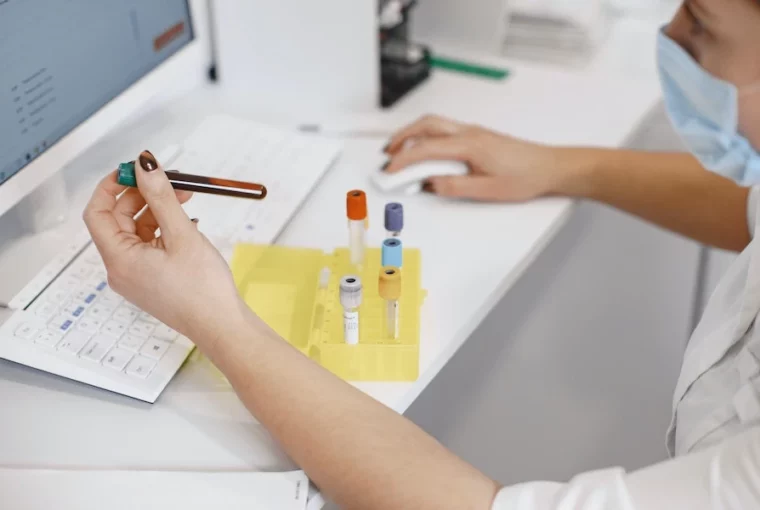The study of recombinant proteins is one of the most exciting, progressive areas of medical research happening in the world today. From treating cancer to helping with biotherapeutic treatments, recombinant proteins are making massive waves in the scientific and medical community. Here is a useful primer on the modern uses for recombinant proteins, and the many, many uses it has for humanity (both right now, and in the near future):
Understanding Recombinant Proteins
Simply put, recombinant proteins are proteins that have been created by cloning recombinant DNA into an expression vector that allows the gene to be expressed and messenger RNA within it to be translated. Recombinant DNA technology can modify a gene, which can result in the production of a mutant protein. Different versions of this mutant protein have opened massive new avenues for modern medicine, especially in the treatment of cancer in humans. Recombinant protein is a modified form of native protein that is produced in a variety of methods to boost protein production, alter gene sequences, and create practical commercial goods.
Creating Recombinant Proteins
Production of recombinant proteins starts at the genetic level, where the protein’s coding sequence is first extracted and then cloned into an expression plasmid vector. The majority of recombinant proteins used for therapeutic purposes come from humans but are expressed in cultured bacteria, yeast, or animal cells. Because less animal experimentation and product are needed for recombinant protein production, it has become a more ethical path for scientists to research antibody-based drugs through. Human genes are extremely complicated and frequently contain introns, which are non-coding DNA regions. As a result, the process of turning mRNA into cDNA is frequently used to create a gene without introns.
The unique expression vectors in recombinant proteins offer promoter, ribosome-binding site, and terminator sequences because the cDNA is deficient in regulatory regions. The cost-effectiveness, simplicity, and speed of the production process, along with acceptable product yields, are the primary factors that influence the creation of recombinant proteins for study and have made it mega popular in today’s scientific community. Since eukaryotic expression systems are required for post-translational modifications like phosphorylation and glycosylation, proteins co-expressed in bacteria wouldn’t have them. Isn’t science absolutely amazing?
As more research is done, the ability of scientists to create recombinant antibodies on a scale never previously thought possible has become a reality. Scaling up the expression systems often involves simple cell systems. To avoid Ab secretion arrest, the culture medium for recombinant antibodies must be strictly regulated, much like it is for the industrial production of monoclonal Abs. Particularly if the Ab is to be used in a clinical setting, the purification stage is essential. Elution profiles and binding properties can be improved by using particular chromatography resins. Additionally, the Ab sequence can be modified to express a tag to facilitate purification.
Medical Uses Of Recombinant Proteins
Recombinant proteins are helpful resources for comprehending how proteins interact with one another. Protein interactions can be broadly categorized as steady or transitory and are crucial to biological functions. RP microarrays have gained popularity recently for studying protein-protein interactions. This method involves seeding a slide with a large number of immobilized proteins, which is then treated with a range of chemicals to study the interactions between the two agents. Researchers have examined how proteins interact with enzymes, tiny chemicals, lipids, nucleic acids, other proteins or peptides, and other proteins using this system. This makes it possible to analyze protein-protein interactions at significantly larger throughputs.
Possibilities In Cancer Treatment And Biotherapeutics
The most promising aspect of recombinant protein research is the way it could impact cancer treatment and research. These lab-made proteins can be used to create hyper-specific and controlled cancer treatments that were not previously thought possible. Biotherapeutic treatments and research are also heavily reliant on new recombinant protein technology. In clinics researching this exciting new technology, recombinant proteins are used to treat serious illnesses like diabetes, dwarfism, myocardial infarction, congestive heart failure, cerebral apoplexy, multiple sclerosis, neutropenia, thrombocytopenia, anemia, hepatitis, rheumatoid arthritis, asthma, Crohn’s disease, and additional cancer therapies.
The Future Of Medicine Is Looking Bright
Thanks to major medical developments, including the optimized research surrounding recombinant proteins, the future of medicine is looking incredibly bright. As more federal and private research dollars are put to use in expanding our understanding of recombinant proteins, the limit of human understanding of diseases and our immune systems will continue to progress. Families look forward to learning about new ways that their loved ones can be treated using these new miracle drug technologies.




